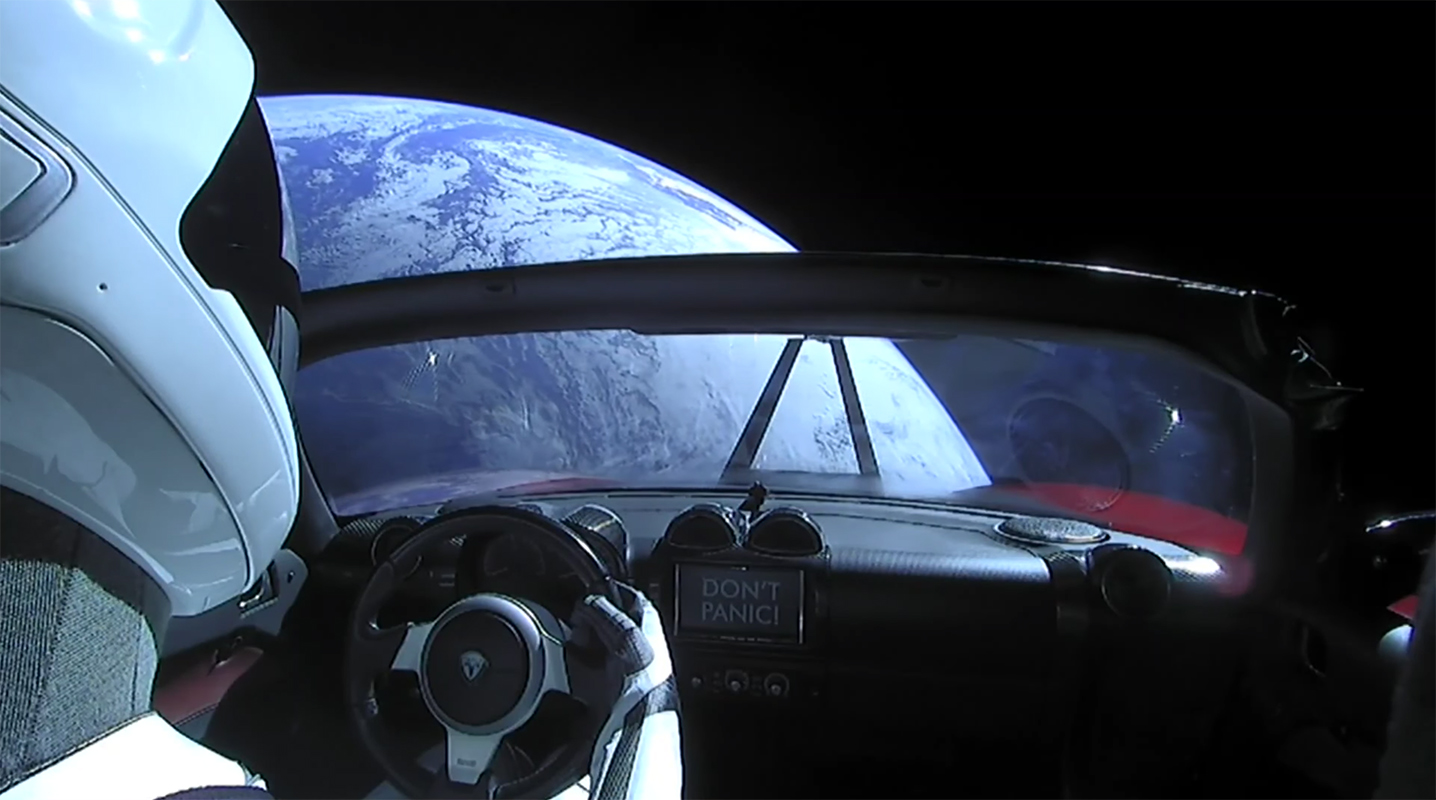'Starman' just zipped past Mars in his rapidly-decaying Tesla Roadster
He probably doesn't look so pretty anymore.

Starman — the dummy riding a cherry-red Tesla Roadster through space — has made his closest approach ever to Mars.
That electric convertible with its mannequin passenger bolted to the top of a Falcon Heavy rocket as a stunt during the SpaceX rocket's first test launch Feb, 6, 2018. (It's common for test launches to include heavy payloads, but they're usually more boring than cherry-red sportscars.) Two years later, the Falcon Heavy upper stage and the vehicle at its tip are making their second trip around the sun. Jonathan McDowell, a Harvard astrophysicist who tracks space objects as a side project, found that Starman passed 4.6 million miles (7.4 million kilometers) from Mars at 2:25 a.m. EDT Oct. 7. That's about 19 times the distance from Earth to the moon, and 35 times closer than anyone on Earth has gotten to Mars.
(The closest recent approach between the two planets was 34.8 million miles (56 million km) in 2003, according to World Atlas, though the planets are often hundreds of millions of miles apart.)
Starman, last seen leaving Earth, made its first close approach with Mars today—within 0.05 astronomical units, or under 5 million miles, of the Red Planet pic.twitter.com/gV8barFTm7October 7, 2020
Related: 8 ways you can see Einstein's theory of relativity in real life
No one can see the Falcon Heavy upper stage at its current distance. And the strange, beautiful images it once beamed home to Earth have long since ceased. But orbits over periods of a few years are fairly straightforward to predict, and McDowell used data about how the rocket was moving when it left Earth's gravity behind to pinpoint its recent movements.
The Roadster-bearing rocket stage is on an asymmetrical orbital course that takes it as far as 1.66 times Earth's distance from the sun at one end of its trek — out beyond the orbit of Mars — and then back within Earth's orbit at the other end, 0.99 times Earth's distance from the sun.
The stage has passed through the second aphelion of its 0.99 x 1.66 AU orbit and a couple of days ago passed back inside the orbit of Mars. pic.twitter.com/C6b8LffPuyOctober 7, 2020
Last time Starman circled the sun, McDowell said, it crossed Mars' orbit while the Red Planet was quite far away. But this time the crossing lined up with a fairly close approach — though still not close enough to feel a strong tug of Martian gravity.
Sign up for the Live Science daily newsletter now
Get the world’s most fascinating discoveries delivered straight to your inbox.
At this point, if you were to go look at the Roadster, it probably would look pretty different. As Live Science reported in 2018, the harsh solar radiation environment between the planets would probably have wrecked all the exposed organic materials (red paint, rubber tires, leather seats and the like), breaking the carbon bonds that hold them together. And without Earth's protective atmosphere and magnetic shielding, even the robust plastics in the windshield and carbon fiber materials would start to disintegrate. Over the course of decades or centuries, the car should be reduced to its aluminum frame and sturdiest glass parts — assuming none of them get destroyed in impacts with passing space rocks.
Originally published on Live Science.










